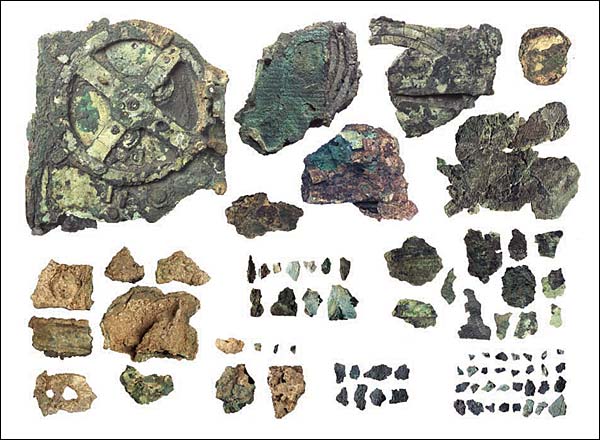A Brief History of Computing: Part One - The Dark Ages
I've always been interested in learning about how the computer has evolved over the decades, so this post will *hopefully* help me to satisfy my desire to delve into the history of where it all began.
Its never really crossed my mind how much I rely on my computer on a day to day basis and I'm not sure how I'd manage to cope without it (sad, I know). It's crazy how children today are being brought up in a world that consists of technology. We are so dependant on the equipment we use and we rely on it in everyday life - you could call it an addiction. Whether it being for personal use such as gaming, or retail, we've come a long way in 130 years.
Antikythera Mechanism
This is one awesome little guy that I believe had a HUGE impact in todays world of computing. It's an early analog computer and was constructed approximately around 1 BC. The mechanism is of Greek origin and was made to calculate astronomical positions. Instead of punching in information on a keyboard like we'd do today, a lever is turned and the information you needed will all be there for you. Kind of like a manual Wikipedia. But more reliable.
 |
The image above shows the various different gears and cogs within the mechanism itself. Pretty complex for such early times.
If you have 3 minutes to spare, this guy has created a lego model of the Antikythera Mechanism which is definitely worth a watch!
The Stepped Reckoner
Invented by the mathematician Gottfried Wilhelm Leibniz in 1694, the Stepped Reckoner was a mechanical calculator that performed four arithmetic operations. Due to the gearwork apparently being beyond the technology for the time, it had many mechanical issues and design flaws which prevented it from functioning properly.
However, putting aside the flaws, one incredibly important thing came out of this object that would later be used for centuries. The Leibniz Wheel. This was invented in 1673 and was used up until the birth of electronic calculators in the 1970's! So even if the Stepped Reckoner did turn out to be a mechanical flop, at least his Leibniz Wheel was used for 3 centuries!
Yet another Lego video showing a working Leibniz Wheel! I'm not obsessed with Lego...promise.
Arithmometer
Now we start to move onto something slightly more reliable than the Stepped Reckoner...
The Arithmometer was the first calculator that was efficient enough to be used within a professional environment. This calculator was able to add and subtract two numbers and perform long division/multiplication methods. It was manufactured from 1851 to 1915 and was the first successful mechanical calculator.
 |
| Reference - Arithmometer (1) |
In comparison to today's calculators, the Arithmometer was big enough to cover a desk. I can imagine this would have been increasingly difficult during the calculator paper on a maths exam.
HP Audio Oscillator
Fast forward a few years and onto more complex systems. Take 1939 for example, the company we know today as Toshiba was founded by the merging of two companies and HP was founded by William Hewlett and David Packard. Hewlett Packard created the audio oscillator in 1939 and this pretty much paved the way for the technology we have today. The oscillator generated one tone and were used in the making of phones, radios and other audio equipment.
 |
| Reference - HP Audio Oscillator 200A (1) |
References:
Antikythera Mechanism
- http://www.age-of-the-sage.org/archaeology/antikythera_mechanism_remains.jpg - mechanism image
- http://www.youtube.com/watch?v=RLPVCJjTNgk - Lego model of Antikythera Mechanism
The Stepped Reckoner
- http://www.wists.com/thumbnails/f/91/f91dac465540cd8f99081221748566ef-orig - Stepped Reckoner image
- http://www.youtube.com/watch?v=CJVvgzTTGQY - Lego Leibniz Wheel
Arithmometer
- http://upload.wikimedia.org/wikipedia/commons/5/59/Arithmometre.jpg - Arithmometer image
HP Audio Oscillator 200A
- http://www.hp.com/hpinfo/abouthp/histnfacts/museum/earlyinstruments/0002/images/0002threeqtr.jpg - image of HP Audio Oscillator








0 comments:
Post a Comment